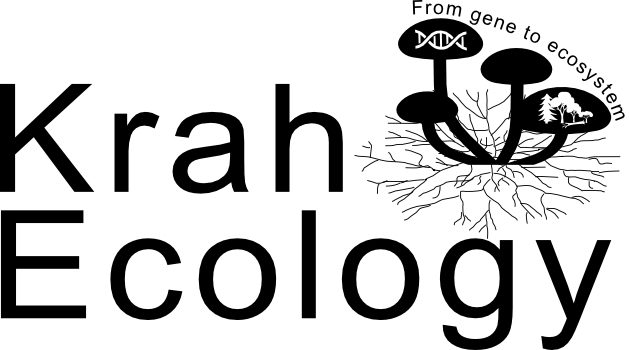Real-world experiments
To better understand the relative and independent effects of different environmental drivers under natural conditions, we use real-world field experiments. Deadwood is an ideal model system for studying experimental treatments on fungal diversity. In previous studies, we found a greater independent effect of host tree species than microclimate. Microclimate, nevertheless selects for more tough-fleshed fruit bodies.
Example publications:
Krah et al. (2018, Journal of Ecology)
Schreiber et al. (under review)

Fungal functional ecology, macroecology, macrophenology
To predict the present and future implications of environmental change, it is vital to understand species assembly mechanisms, thus the “why and how” species communities change along environmental gradients. Therefore, we use the trait-based approach in functional ecology to gain a mechanistical understanding of individual and species responces to their environment. (Macro-) ecological studies using massive amounts of availble data can provide insights into potential mechanisms. Nontheless, these potential mechanisms need to be tested in laboratory studies to understand their causality.
Example publications:
Krah et al. (2023, Ecology letters)
Oechler & Krah (2021, Frontiers in Ecology and Evolution)
Krah et al. (2019, Nature Communications)

Fungal fRUITing EcoPHYsiology (FRUITEPHY)
To predict the present and future implications of environmental change it is vital to understand species assembly mechanisms, thus the “why and how” species communities change along environmental gradients. The trait-centered approach is essential as the abiotic and biotic environmental selection acts on species based on their evolved functional traits, rather than on the “species identity”, which is the typical unit in biodiversity studies. Macroecological studies using massive amounts of availble data can provide insights into potential mechanisms. Finally those potential mechanisms need to be tested in laboratory studies to understand their causality.
Example publications:
Hennicke et al. (2023, Journal of Fungi)
Krah et al. (2021, Ecology and Evolution)
Funding 6000€ (Goethe University)

Fungal adaptations to extrem environments – Cliffs
Cliffs are an example of extreme environments, ideal to study species’ adaptations to harsh environments considering drought or resources limitations. Further, the diversity of fungi and bacteria in cliffs is currently only vaguely known. Rock-climbing experienced tremendous growth during the last years, with more than 1.6 million active climbers in Europe, setting an increasing pressure on cliff biodiversity.
Example publications:
Krah and March Salas (2022)
Funding 3200€ (Friends of Goethe University)
Funding 19800€ (Goethe University)

Tropical fungal ecology
Fungi contribute substantially to carbon and nutrient cycles by decomposing dead wood or forming symbiosis with plant roots. Current knowledge of their occurrence, distribution, and
drivers of their diversity derives almost exclusively from temperate and boreal forest ecosystems. However, we know very little about tropical ecosystems. Thus we study fungal diversity and ecology in Benin (West Africa).
Olou … Krah (2019)
Olou et al. (2020, 2023)

